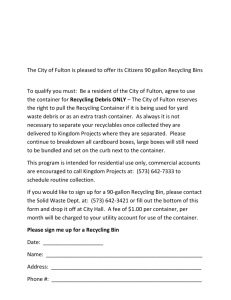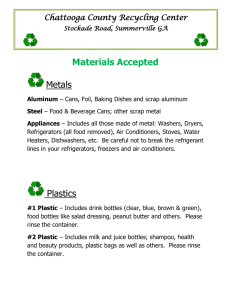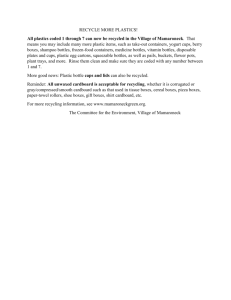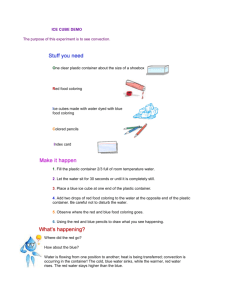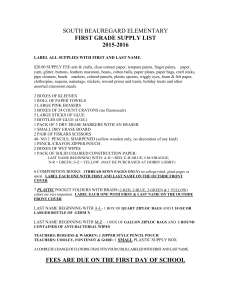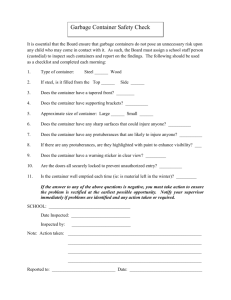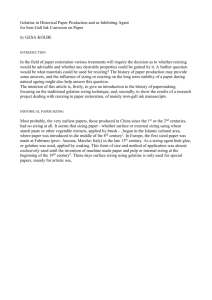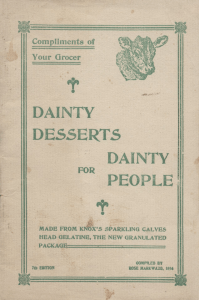To make models of plant and animal cells
advertisement
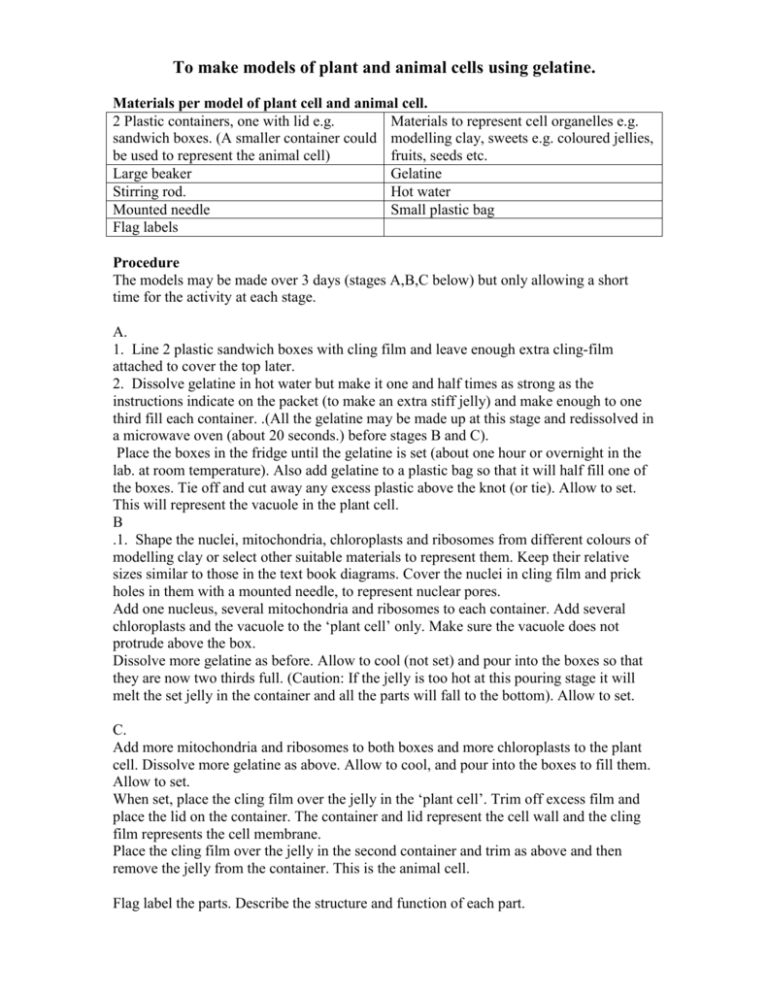
To make models of plant and animal cells using gelatine. Materials per model of plant cell and animal cell. 2 Plastic containers, one with lid e.g. Materials to represent cell organelles e.g. sandwich boxes. (A smaller container could modelling clay, sweets e.g. coloured jellies, be used to represent the animal cell) fruits, seeds etc. Large beaker Gelatine Stirring rod. Hot water Mounted needle Small plastic bag Flag labels Procedure The models may be made over 3 days (stages A,B,C below) but only allowing a short time for the activity at each stage. A. 1. Line 2 plastic sandwich boxes with cling film and leave enough extra cling-film attached to cover the top later. 2. Dissolve gelatine in hot water but make it one and half times as strong as the instructions indicate on the packet (to make an extra stiff jelly) and make enough to one third fill each container. .(All the gelatine may be made up at this stage and redissolved in a microwave oven (about 20 seconds.) before stages B and C). Place the boxes in the fridge until the gelatine is set (about one hour or overnight in the lab. at room temperature). Also add gelatine to a plastic bag so that it will half fill one of the boxes. Tie off and cut away any excess plastic above the knot (or tie). Allow to set. This will represent the vacuole in the plant cell. B .1. Shape the nuclei, mitochondria, chloroplasts and ribosomes from different colours of modelling clay or select other suitable materials to represent them. Keep their relative sizes similar to those in the text book diagrams. Cover the nuclei in cling film and prick holes in them with a mounted needle, to represent nuclear pores. Add one nucleus, several mitochondria and ribosomes to each container. Add several chloroplasts and the vacuole to the ‘plant cell’ only. Make sure the vacuole does not protrude above the box. Dissolve more gelatine as before. Allow to cool (not set) and pour into the boxes so that they are now two thirds full. (Caution: If the jelly is too hot at this pouring stage it will melt the set jelly in the container and all the parts will fall to the bottom). Allow to set. C. Add more mitochondria and ribosomes to both boxes and more chloroplasts to the plant cell. Dissolve more gelatine as above. Allow to cool, and pour into the boxes to fill them. Allow to set. When set, place the cling film over the jelly in the ‘plant cell’. Trim off excess film and place the lid on the container. The container and lid represent the cell wall and the cling film represents the cell membrane. Place the cling film over the jelly in the second container and trim as above and then remove the jelly from the container. This is the animal cell. Flag label the parts. Describe the structure and function of each part.

